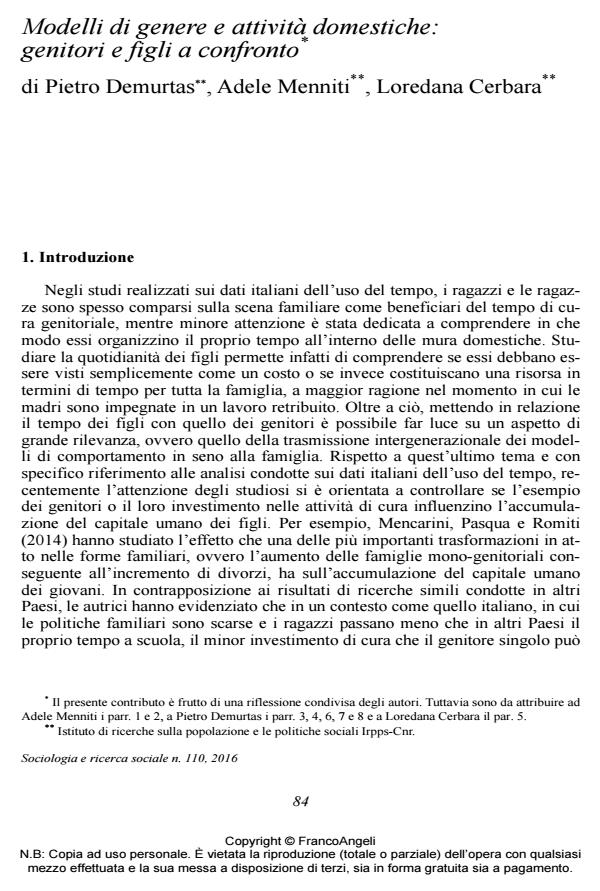Modelli di genere e attività domestiche: genitori e figli a confronto
Titolo Rivista SOCIOLOGIA E RICERCA SOCIALE
Autori/Curatori Pietro Demurtas, Adele Menniti, Loredana Cerbara
Anno di pubblicazione 2016 Fascicolo 2016/110
Lingua Italiano Numero pagine 31 P. 84-114 Dimensione file 293 KB
DOI 10.3280/SR2016-110006
Il DOI è il codice a barre della proprietà intellettuale: per saperne di più
clicca qui
Qui sotto puoi vedere in anteprima la prima pagina di questo articolo.
Se questo articolo ti interessa, lo puoi acquistare (e scaricare in formato pdf) seguendo le facili indicazioni per acquistare il download credit. Acquista Download Credits per scaricare questo Articolo in formato PDF

FrancoAngeli è membro della Publishers International Linking Association, Inc (PILA)associazione indipendente e non profit per facilitare (attraverso i servizi tecnologici implementati da CrossRef.org) l’accesso degli studiosi ai contenuti digitali nelle pubblicazioni professionali e scientifiche
In the light of changes occurred in gender roles over the years, it seems useful to investigate whether the new generations adopt more equal gender roles at home and if the parents’ daily organization affects the participation of their children to domestic chores. Using data from the Istat survey on Time Use carried out in 2008-9, the paper examines some hypotheses related to the well-known approaches (gender ideology, modelling, time availability, stress crossover). The results, while showing a limited contribution of the sons in domestic work, highlight the greater accountability of the daughters, thus confirming the family as a context of reproduction of traditional gender roles. At the same time, it was noticed that the father has an important educational role: both male and female children are more involved when their fathers are engaged in the more stereo-typically female tasks. Moreover, children’s sensitivity to the parental stress appears to be mediated by gender: male children increase the time devoted to housework when their fathers are stressed out and so do the females with reference to their mothers
- Essere padri: il coinvolgimento nelle vite delle figlie e dei figli in base ai dati OCSE-PISA Brunella Fiore, Alessandra Decataldo, Noemi Novello, in SICUREZZA E SCIENZE SOCIALI 3/2022 pp.79
DOI: 10.3280/SISS2022-003006
Pietro Demurtas, Adele Menniti, Loredana Cerbara, Modelli di genere e attività domestiche: genitori e figli a confronto in "SOCIOLOGIA E RICERCA SOCIALE " 110/2016, pp 84-114, DOI: 10.3280/SR2016-110006